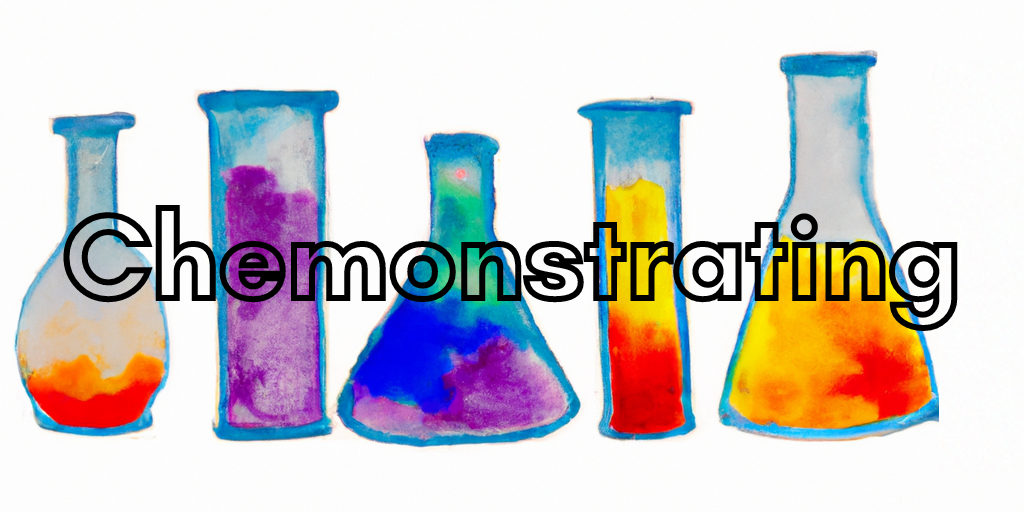Pop Bottle
Purpose:
To demonstrate an exothermic reaction between hydrogen and oxygen.
Materials:
- Bunsen burner
- Ear protection
- Rubber stoppers to fit soda bottles
- Rubber/vinyl hose
- Soda bottles wrapped in duct tape
- Deep plastic tub
Reagents:
- Oxygen gas (O2(g))
- Hydrogen gas (H2(g))
Hazards and PPE:
- A small kickback can be expected from the bottles. Therefore, do not hold the bottleat the base.
- Wear approved safety goggles and gloves.
Protocol:
Preparation
- Fill a deep tub with water.
- Connect long hoses to H2/O2 gas supplies.
- Submerge bottle to allow to fill with water.
- Water should be deep enough that bottle can be angled up to allow any air to bubble out.
- Close bottle tightly with rubber stopper while still submerged.
- Activate gas flow such that when gas hoses are submerged, gas bubbles through water somewhat slowly.
- Invert bottle underwater and remove rubber stopper, taking care not to squeeze bottle.
- Insert the end of the O2 hose into the opening of the bottle and allow gas to fill the bottle (displace water) to the 1/3 mark.
- Insert the end of the H2 hose into the opening of the bottle and allow gas to fill the remainder of the bottle until bubbles emerge from the opening.
- This achieves a 2:1 H:O ratio of gas in the bottle.
- Quickly and tightly replace the stopper while the bottle is still inverted under the water.
- Remove the bottle from the water and dry the outside. Shake the bottle to listen for any water inside. If there is any, the bottle will not work and must be remade.
Demonstration
- Don ear protection.
- Hold the bottle gently from the center, pointed away from your audience.
- Ignite a Bunsen burner on the benchtop.
- To ignite the bottle, remove the stopper and place the mouth of the bottle by the burner.
- The bottle will immediately shoot out of your hand with a loud bang.
Additional Notes:
- The soda bottles for this reaction should be wrapped in duct tape for durability. However, things will be easiest if you leave a window of clear bottle uncovered on the side running the full length so that you can see how full the bottle is during filling. You can, if you wish, mark this window with a permanent marker at the 1/3 mark for ease of filling.
Disposal:
- No disposal is required. Bottles can be reused!
Reactions:
- 2H2(g) + O2(g) → 2H2O(g) + ΔH
Citations:
- This demo adapted from the demo library of the Chemistry department at the University of Illinois at Urbana-Champaign.
